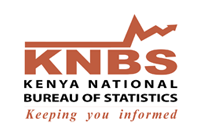 The 2009 Kenya Population and Housing Census (KPHC) was conducted from the night of 24th/25th to 31st August 2009. The Census was the fifth to be undertaken in Kenya since independence and the seventh in the country‟s history. Previous censuses were conducted in 1948, 1962, 1969, 1979, 1989 and 1999. Planning and execution of the 2009 Census was spearheaded by the Kenya National Bureau of Statistics (KNBS) on behalf of the Government – in accordance with the Statistics Act, 2006. The theme of the Census was “Counting our People for Implementation of Vision 2030”, which was deemed necessary in order to respond to the greater demand for statistical information, for monitoring the implementation of Kenya‟s development plans and other global initiatives, such as the Millennium Development Goals (MDGs).
The 2009 Kenya Population and Housing Census (KPHC) was conducted from the night of 24th/25th to 31st August 2009. The Census was the fifth to be undertaken in Kenya since independence and the seventh in the country‟s history. Previous censuses were conducted in 1948, 1962, 1969, 1979, 1989 and 1999. Planning and execution of the 2009 Census was spearheaded by the Kenya National Bureau of Statistics (KNBS) on behalf of the Government – in accordance with the Statistics Act, 2006. The theme of the Census was “Counting our People for Implementation of Vision 2030”, which was deemed necessary in order to respond to the greater demand for statistical information, for monitoring the implementation of Kenya‟s development plans and other global initiatives, such as the Millennium Development Goals (MDGs).
The main objective of the 2009 Census was to provide the Government and other stakeholders with essential information on the population, as regards demographic, social and economic characteristics, housing conditions and household amenities. By generating information at all administrative levels, it was also intended to provide a sound basis to evaluate the impact of population-related policies and programmes in the country.
The first series of the 2009 Census preliminary results were released on August, 2010, in a set of four volumes. The volumes presented census information in the following categories; Population Distribution by Administrative Units; Population Distribution by Political Units; Population Distribution by Age and Sex; and, Distribution of Households by Socio-economic Characteristics. This second set comprising thirteen analytical reports, addresses issues on Fertility and Nuptiality, Mortality , Housing Conditions, Amenities and Household Assets, Education and Training, Household and Family Dynamics, Disability, Migration, Urbanization, Labour Force Dynamics, Gender Dimensions, Population Dynamics, Population Projections and Census Atlas.
Preparation of the analytical reports involved collaborative efforts of both local and international experts as well as various Government Ministries and Departments. The authors were recruited on competitive basis, ensuring they possessed the necessary experience and skills. The authorship was done under the supervision of two experienced lead consultants.
Data capture was done using scanning technology. The processes were highly integrated, with tight controls to guarantee accuracy of results. To achieve internal consistency and minimize errors, rigorous data editing, cleaning and validation were carried out to facilitate further analysis of the results. The information presented in these reports is therefore based on more cleaned data sets, and is preferred in case there are differences in the results published in the first set of volumes.

